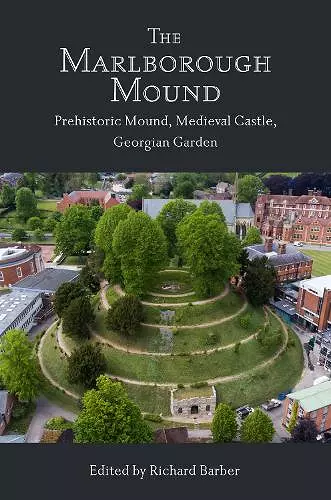The Marlborough Mound
Prehistoric Mound, Medieval Castle, Georgian Garden
Format:Hardback
Publisher:Boydell & Brewer Ltd
Published:23rd Aug '22
Should be back in stock very soon

The Marlborough Mound has recently been recognised as one of the most important monuments in the group around Stonehenge. It was also a medieval castle and a feature in a major 17th century garden. This is the first comprehensive history of this extraordinary site. Marlborough Mound, standing among the buildings of Marlborough College, has attracted little attention until recently. Records showed it to be the motte of a Norman castle, of which there were no visible remains. The local historians and archaeologists who had investigated it had found very little in the way of archaeological evidence beyond a few prehistoric antler picks, the odd Roman coin, and a scatter of medieval pottery. It was to be archaeology which provided the most dramatic discovery after the Mound Trust began to restore the mound in 2003. English Heritage were investigating Silbury Hill, and arranged to take cores from the Mound for dating purposes. The results were remarkable, as they showed that the Mound was almost a twin of Silbury Hill and therefore belonged to the extraordinary assembly of prehistoric monuments centred on Stonehenge. For the medieval period, this book brings together for the first time all that we know about the castle from the royal records and from chronicles. These show that it was for a time one of the major royal castles in the land. Most of the English kings from William I to Edward III spent time here. For Henry III and his queen Eleanor of Provence, it was their favourite castle after Windsor. It marks the end of the first stage of the work of the Mound Trust, which, following the restoration, turns to its second objective of promoting public knowledge of the Mound based on scholarly research. As to its final form as a garden mound next to the house of the dukes of Somerset, in the eighteenth century, this emerges from letters and even poems, and from the recent restoration. Much of this has been slow and painstaking work, however, involving the removal of the trees which endangered the structure of the Mound, the recutting of the spiral path and the careful replanting of the whole area with suitable vegetation. By doing this, the shape of the Mound as a garden feature...
This book is testament to the success of a visionary project. * British Archaeology *
The authors successfully bring out the significance of Marlborough and balance accessible writing styles with enough detail and context to allow issues to be fully explored. The book's editor and authors combine well to bring the many lives of the Marlborough Mound to a wider audience. * MEDIEVAL ARCHAEOLOGY *
ISBN: 9781783271863
Dimensions: unknown
Weight: 566g
224 pages